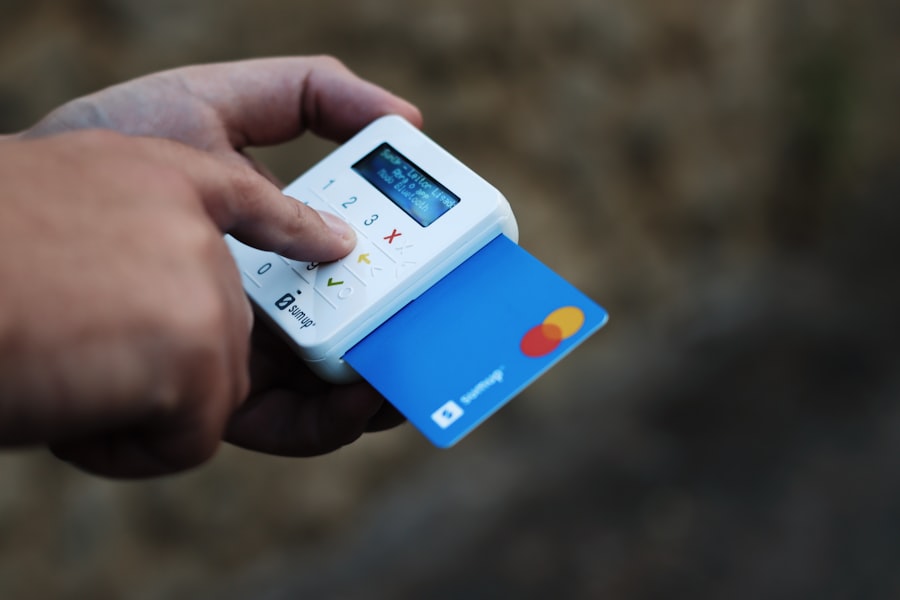In today’s fast-paced digital economy, real-time payments have revolutionized the way you conduct transactions. The convenience of instant transfers has made it easier for you to send and receive money, whether for personal or business purposes. However, this rapid evolution in payment technology has also opened the door to a new wave of fraud.
Real-time payment fraud refers to the illicit activities that exploit the immediacy of these transactions, allowing fraudsters to act quickly and often evade detection. Understanding this phenomenon is crucial for safeguarding your financial interests and maintaining the integrity of your transactions. As you delve deeper into the world of real-time payment fraud, it becomes evident that the stakes are high.
The speed at which these transactions occur means that once a fraudulent payment is initiated, there is little time to react. Unlike traditional payment methods that may have built-in delays for verification, real-time payments bypass these safeguards, making it imperative for you to be vigilant. By grasping the nuances of real-time payment fraud, you can better equip yourself with the knowledge needed to protect your assets and mitigate risks.
Key Takeaways
- Real time payment fraud is a growing concern for businesses and individuals alike.
- Common types of real time payment fraud include account takeover, identity theft, and phishing scams.
- Real time payment fraud occurs when criminals exploit vulnerabilities in the payment system to steal money or sensitive information.
- The impact of real time payment fraud on businesses can be devastating, leading to financial losses and damage to reputation.
- Recognizing the signs of real time payment fraud is crucial for businesses to protect themselves and their customers.
Common Types of Real Time Payment Fraud
Real-time payment fraud manifests in various forms, each with its own tactics and targets. One prevalent type is account takeover fraud, where a fraudster gains unauthorized access to your financial accounts. This can happen through phishing schemes or data breaches, allowing them to initiate real-time payments without your consent.
As a victim, you may not even realize that your account has been compromised until it’s too late, underscoring the importance of monitoring your accounts regularly. Another common type is social engineering fraud, where scammers manipulate you into providing sensitive information. This could involve impersonating a trusted entity, such as a bank or a service provider, and convincing you to authorize a payment or share your login credentials.
The psychological tactics employed in social engineering can be sophisticated, making it essential for you to remain skeptical of unsolicited requests for information. Recognizing these common types of fraud can help you stay one step ahead and protect yourself from potential losses.
How Real Time Payment Fraud Occurs

Real-time payment fraud typically occurs through a combination of technological vulnerabilities and human error. Fraudsters often exploit weaknesses in payment systems or use advanced techniques to bypass security measures. For instance, they may employ malware to infiltrate your devices, capturing sensitive information such as passwords or banking details.
Additionally, the rise of mobile payment platforms has created new avenues for fraud. Many users may not fully understand the security features available on these platforms, making them susceptible to attacks.
For example, if you use a mobile wallet without enabling two-factor authentication, you may inadvertently expose yourself to risks. Understanding how these fraudulent activities occur can empower you to take proactive measures to safeguard your financial information.
The Impact of Real Time Payment Fraud on Businesses
| Impact of Real Time Payment Fraud on Businesses |
|---|
| 1. Financial Losses |
| 2. Damage to Reputation |
| 3. Operational Disruption |
| 4. Increased Regulatory Scrutiny |
| 5. Customer Trust Erosion |
The ramifications of real-time payment fraud extend beyond individual victims; businesses are also significantly affected. When a company falls victim to fraud, it can lead to substantial financial losses that may jeopardize its operations. The immediate impact often includes lost revenue from unauthorized transactions and potential penalties from financial institutions.
Moreover, the reputational damage can be long-lasting, eroding customer trust and loyalty. In addition to direct financial losses, businesses may face increased operational costs as they invest in enhanced security measures and fraud detection systems. This can divert resources away from growth initiatives and innovation, stifling overall progress.
As a business owner or manager, recognizing the broader implications of real-time payment fraud is essential for developing a comprehensive risk management strategy that protects both your assets and your reputation.
Recognizing the Signs of Real Time Payment Fraud
Being able to identify the signs of real-time payment fraud is crucial for mitigating risks. One red flag is unusual account activity, such as unexpected transactions or changes in account settings that you did not authorize. If you notice any discrepancies in your account statements or receive alerts about transactions you did not initiate, it’s vital to act quickly and investigate further.
Another sign to watch for is communication from your financial institution regarding suspicious activity. If you receive alerts about potential fraud or requests for verification that seem out of the ordinary, do not ignore them. Scammers often create urgency to pressure you into making hasty decisions, so it’s important to take a step back and assess the situation critically.
Preventing Real Time Payment Fraud

Preventing real-time payment fraud requires a multifaceted approach that combines technology with personal vigilance. One of the most effective strategies is implementing strong security measures on your accounts. This includes using complex passwords that are difficult for others to guess and enabling two-factor authentication whenever possible.
By adding an extra layer of security, you significantly reduce the likelihood of unauthorized access. Education plays a pivotal role in prevention as well. Familiarizing yourself with common scams and tactics used by fraudsters can help you recognize potential threats before they escalate.
Regularly updating your knowledge about cybersecurity best practices ensures that you remain informed about emerging risks and how to counteract them effectively. By taking these proactive steps, you can create a robust defense against real-time payment fraud.
The Role of Technology in Detecting Real Time Payment Fraud
Technology serves as both a tool for fraudsters and a shield for individuals and businesses against real-time payment fraud. Advanced algorithms and machine learning models are increasingly being employed by financial institutions to detect suspicious patterns in transaction data. These systems analyze vast amounts of information in real time, identifying anomalies that may indicate fraudulent activity.
As a user, this technology works behind the scenes to protect your transactions and alert you to potential threats. Moreover, biometric authentication methods are gaining traction as a means of enhancing security. Fingerprint recognition and facial recognition technologies provide an additional layer of verification that is difficult for fraudsters to bypass.
By leveraging these technological advancements, you can significantly reduce your vulnerability to real-time payment fraud while enjoying the convenience of instant transactions.
Best Practices for Real Time Payment Fraud Prevention
To effectively prevent real-time payment fraud, adopting best practices is essential. First and foremost, always keep your software and devices updated with the latest security patches. Cybercriminals often exploit vulnerabilities in outdated systems, so staying current can help protect you from potential threats.
Additionally, consider using reputable security software that offers real-time protection against malware and phishing attempts. Another best practice is to regularly monitor your financial accounts for any unusual activity. Set up alerts for transactions above a certain threshold or any changes made to your account settings.
This proactive approach allows you to catch potential fraud early on and take necessary action before significant damage occurs. By incorporating these best practices into your routine, you can create a safer environment for your financial transactions.
The Importance of Real Time Payment Fraud Education and Training
Education and training are critical components in the fight against real-time payment fraud. For businesses, providing employees with comprehensive training on recognizing and responding to potential threats is essential for creating a culture of security awareness. Regular workshops or seminars can help reinforce best practices and keep staff informed about emerging trends in fraud tactics.
As an individual user, seeking out educational resources on cybersecurity can empower you to make informed decisions regarding your financial transactions. Many organizations offer online courses or webinars focused on fraud prevention strategies tailored for consumers. By investing time in education, you equip yourself with the knowledge needed to navigate the complexities of real-time payments safely.
Responding to Real Time Payment Fraud Incidents
In the unfortunate event that you become a victim of real-time payment fraud, knowing how to respond swiftly is crucial. First, contact your financial institution immediately to report the fraudulent activity. They can assist you in freezing your account or reversing unauthorized transactions if caught in time.
Additionally, documenting all relevant details about the incident will be helpful when filing reports with law enforcement or regulatory agencies. It’s also important to review your accounts thoroughly after an incident to identify any other potential vulnerabilities or unauthorized access points. Consider changing passwords and enabling additional security measures on all accounts linked to your finances.
By taking these steps promptly, you can minimize further losses and enhance your overall security posture moving forward.
The Future of Real Time Payment Fraud Prevention
As technology continues to evolve, so too will the methods employed by fraudsters in their attempts to exploit real-time payments. However, advancements in cybersecurity are also progressing rapidly, offering new tools and strategies for prevention. The future will likely see increased integration of artificial intelligence in detecting fraudulent patterns more accurately and efficiently than ever before.
Moreover, as awareness around real-time payment fraud grows among consumers and businesses alike, there will be a greater emphasis on collaboration between financial institutions and regulatory bodies. This collective effort will foster an environment where information sharing becomes commonplace, allowing for quicker responses to emerging threats. By staying informed about these developments and adapting accordingly, you can better protect yourself against the evolving landscape of real-time payment fraud.
In conclusion, understanding real-time payment fraud is essential in today’s digital landscape where convenience often comes at a cost. By recognizing common types of fraud, knowing how they occur, and implementing preventive measures, you can safeguard your financial interests effectively. Education plays a vital role in this endeavor; staying informed empowers you to navigate potential threats confidently while leveraging technology as both a shield and a tool for protection against fraudulent activities.
In the rapidly evolving landscape of financial technology, real-time payment systems have become a double-edged sword, offering both convenience and new avenues for fraud. As these systems gain popularity, understanding the intricacies of real-time payment fraud becomes crucial. An insightful article on this topic can be found on HeyDidYouKnowThis, which delves into the mechanisms and preventive measures associated with real-time payment fraud. For a deeper understanding, you can explore a related article on their website by visiting this page. This resource provides valuable insights into the challenges and solutions surrounding real-time payment fraud, making it an essential read for anyone interested in the security aspects of modern financial transactions.
WATCH THIS! 🏦 1 Billion Dollar Scam That Banks Won’t Stop 🤑
FAQs
What is real time payment fraud?
Real time payment fraud refers to fraudulent activities that occur during real time payment transactions, such as instant bank transfers or mobile payments. These fraudulent activities can include unauthorized transactions, identity theft, and account takeover.
How does real time payment fraud occur?
Real time payment fraud can occur through various methods, including phishing, malware, social engineering, and account takeover. Fraudsters may also exploit vulnerabilities in payment systems or use stolen credentials to initiate unauthorized transactions.
What are the consequences of real time payment fraud?
The consequences of real time payment fraud can be significant for both individuals and businesses. Victims may experience financial losses, identity theft, and damage to their credit scores. Businesses may incur financial losses, damage to their reputation, and potential legal liabilities.
How can individuals protect themselves from real time payment fraud?
Individuals can protect themselves from real time payment fraud by regularly monitoring their bank accounts and credit reports, using strong and unique passwords, enabling multi-factor authentication, and being cautious of phishing attempts and suspicious links or emails.
How can businesses prevent real time payment fraud?
Businesses can prevent real time payment fraud by implementing robust security measures, such as encryption, tokenization, and fraud detection systems. They can also educate their employees and customers about the risks of real time payment fraud and establish clear policies and procedures for handling payment transactions.
